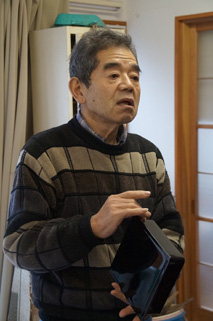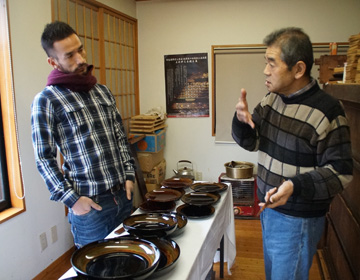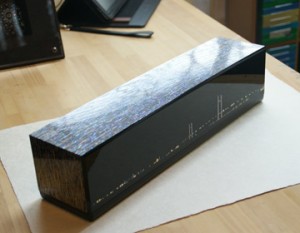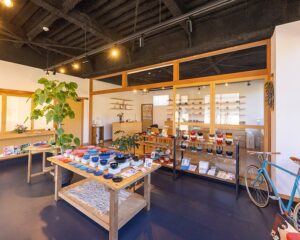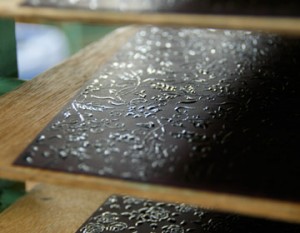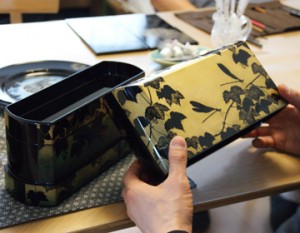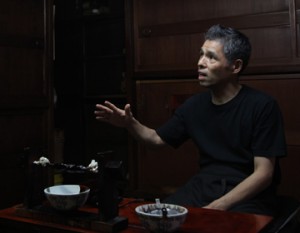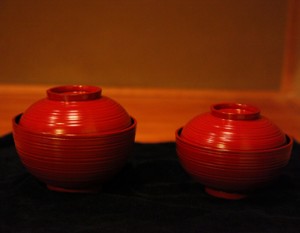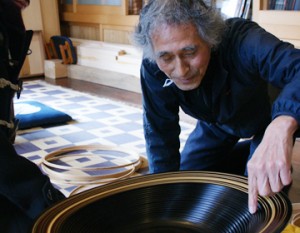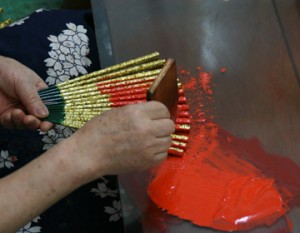Naruko lacquerware with 400 years of history
Naruko lacquerware is a specialty of the former town of Naruko-machi (now Osaki-shi) in Miyagi Prefecture. It is said to have originated in the early Edo period, during the years of Kanei (1624 – 1643). That means it has nearly 400 years of history.
In order to promote Naruko lacquerware, the third lord of Iwadeyama clan, Toshichika Date, sent a lacquerer and a gold lacquer master to Kyoto for training. Naruko lacquerware began to flourish there, continuing to this day.
One of the major characteristics of Naruko lacquerware is how the lacquer is painted. There are various techniques such as ”kijiro-nuri” that brings out the beauty of the grain of the wood, ”fukiurushi-nuri” that repeats the process of painting and wiping colorless lacquer in order to enhance the pattern on the surface of the wood, ”benitame-nuri” that paints colorless lacquer over a layer of red lacquer. Then there is a technique unique to Naruko, ”ryumon-nuri” which creates marble patterned lacquer. All of these lacquerware have a simple beauty which is compatible with daily life.

What he brought back from training in Akita
Tsuneo Goto was born in a family of craftsmen who have long played an important role in Naruko lacquerware, and he himself has been making lacquerware for a long time. In his teens, he became an apprentice at a lacquerware workshop in Akita, where he learned various techniques, about 50 in total. Goto showed us the first piece he made during his apprenticeship. A large plate with patterns of plants using egg shells.
”I will never sell it, even if I become very poor.” he said as he handled the plate lovingly.
After his apprenticeship, he began his career as a Naruko lacquerware craftsman, and he says his experience in Akita was very valuable, because of the many techniques he acquired, in addition to the techniques of Naruko lacquerware.
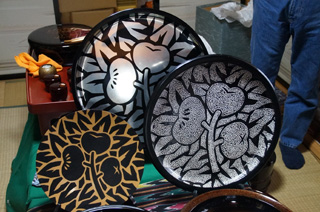
Tradition and beyond
Needless to say, Goto is a Naruko lacquerware specialist, but he is also able to use many different techniques. Goto ushered us into his workshop and showed us many pieces of his work. There, a vermillion tray of a deep hue with black lacquer showing through caught Nakata’s eyes. On the surface, it is was decorated with delicate lines created by painting the lacquer in many layers then sanded.
”I got the image from the rings of Jupiter”
”I see. Now they are all the same size, but may be if you have plates of the same design in different sizes, they may look pretty when they are stacked and you can see the lines from above.” Nakata shares an idea that came to mind. Goto answered ”Yes, yes! That sounds interesting. Maybe I’ll make that next time.” He took interest in Nakata’s idea.
”You see, it’s interesting to hear other people’s ideas. There is a limit to what one can come up with. That’s the kind of work I want to make.”
He listens seriously to ideas that Nakata just happened to think of. And says ”I may make that next time.” This flexibility of the mind may be the driving force to pass on the tradition of Naruko lacquerware to the next generation.
